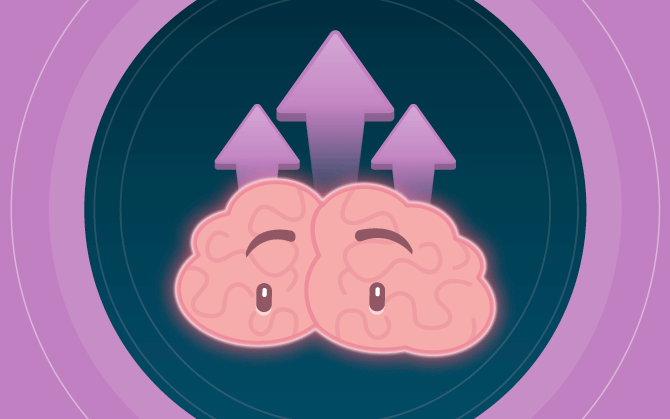
What will we see in this post
Have you ever heard about neuroeducation? It is very promising for the educational market! Neuroeducation’s key concept is respect for the student’s individuality — each individual learns their own way and this needs to be explored.
Brain functions and cognitive and behavioral functions are responsible for this individual learning process.
Keep reading to understand more!
The neuroeducation concept
Neuroeducation is an interdisciplinary approach. It comes from the union of three areas of human knowledge:
- pedagogy, which is dedicated to learning and educational processes;
- psychology with its contributions to research on cognition and behavior;
- neuroscience, which focuses on the functioning of the central nervous system.
Pedagogy has always emphasized mainly the idea of a collective in teaching processes: students learned from integration with the community and transformed their knowledge during social interactions.
However, cognitive and behavioral process-oriented studies began to come into vogue from the past century.
One of the major contributors to the prominence of this area was linguist Noam Chomsky, who developed a very consistent theory about language acquisition by individuals. In his opinion, this process depended more on mental capacity rather than on social interactions.
This thought opened the door to a series of research aimed at unraveling the secrets of cognitive functions: language, memory, reasoning, attention, and other brain capabilities.
Later, neuroscience and true brain scanning emerged – we began to realize that each area of that organ reacted differently to certain stimuli.
So the idea that learning processes were tied to social interactions changed a little.
Now, the focus is on individual reactions to each stimulus, and how personal behaviors change.
Sounds complex, right?
The subject is quite long, but the most important lesson here is that neuroeducation is reshaping the way students are approached. Their individual characteristics are now observed, especially on how they influence the neural system.
Neuroeducation in the learning process
To make it even more clear, think of the following context: Information flows very fast nowadays. Our attention is trained to be more selective on a daily basis.
A video on YouTube, news on TV, music on the radio: we have the impulse of rolling the screen a little further, changing the channel or the radio station, because we hardly waste much time on something that does not immediately catch our attention.
This is a reflex of neurological changes that comes out exactly with the excess of stimuli — which results from a technological transformation, which in turn comes from the digital world and globalization.
Each individual learns their own way
Change in the way we deal with external stimuli also happens at the individual level, as each person reacts in a certain way and at their own pace. And that makes a lot of difference within the classrooms.
Have you heard about that story that there are “multiple intelligences”? The idea makes sense.
It is difficult to apply a uniform teaching method, and expect the whole class to succeed in the finals. Some people will learn perfectly, while others will not.
But it is not a question of lower intellectual ability or lack of dedication.
The point is that each individual has their neural functions acting in a certain way, in addition to cognitive skills and particular behavioral processes.
The results are more positive.
Using the contributions of psychology and neuroscience ensures that the learning process be more accurate and, this way, that content will be better used.
Some of the effects of this approach on education are:
- identification of student’s individual needs;
- more stimulative teaching methodologies;
- deeper assimilation of information;
- respect for each individual’s cognitive potential.
Moreover, using knowledge about brain function in the educational process is very important precisely because of its fluid nature – it changes as you learn.
The nervous system creates connections between neurons according to individual experiences. So understanding what the student’s personal characteristics makes them more autonomous and interested.
Student protagonism is crucial for correct functions to be stimulated and learning more complete.
This is especially true for distance education, since in this teaching model, students naturally have more freedom to decide regarding their own learning processes.
The implementation of this approach
To take advantage of neuroeducation findings in the classroom, you need to be clear about some fundamental precepts of this approach, which are:
- each brain reacts in its own way to stimuli, and that changes it;
- learning depends on environmental/social influences, but also on genetic predispositions and individual mental processes;
- cognitive enhancement is essential in learning, as is metacognition – the self-questioning about what has been learned.
Based on this, neuroeducation scholars suggest some practices to be adopted in teaching processes. Write it down:
- Assess students individually, through brain mappings and cognitive tests;
- Promote activities that stimulate cognitive functions and strengthen synapses, such as music, memory games, practical thinking exercises, etc.;
- Open room for dialog and have an adaptive methodological culture, according to each student’s individual results;
- Identify behavioral disorders or even learning disabilities and treat them with the support of psychology and neuroscience, to avoid student impairments, among other things.
Neuroeducation is achieving more and more focus, and today we have a great ally: technology!
Therefore, the approach that considers these precepts may seem very complicated now, but chances are that it will be the future of education, and that it is important now to encourage these methods.
Besides neuroeducation, there are several other trends for teaching and some are now even reality.
Want to know which they are? Check out all the news in our post about essential educational technologies for those who teach online.





